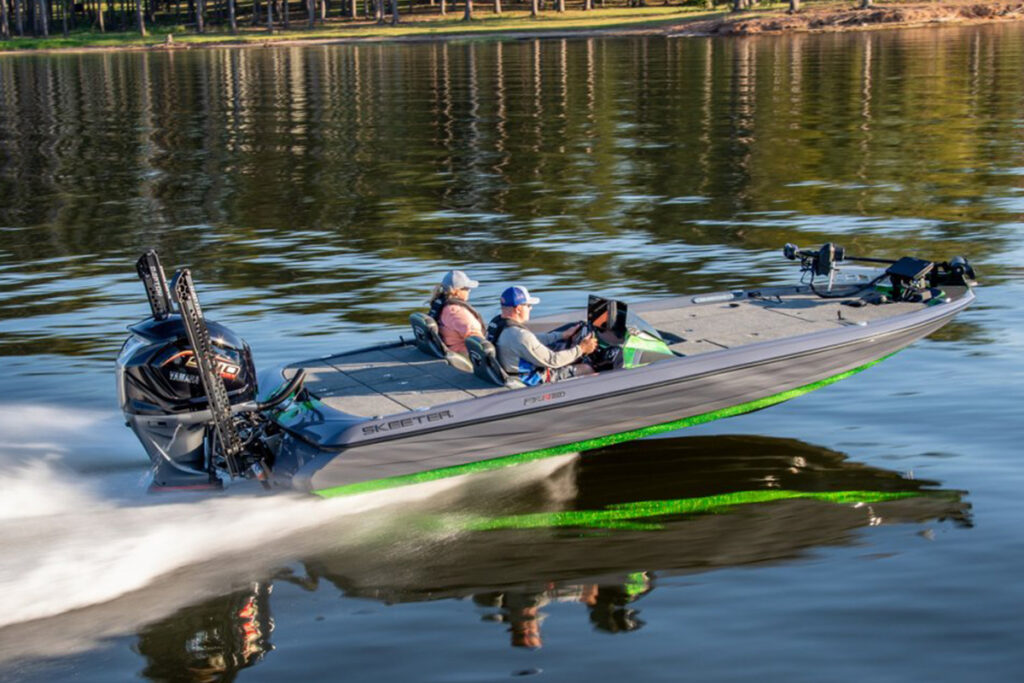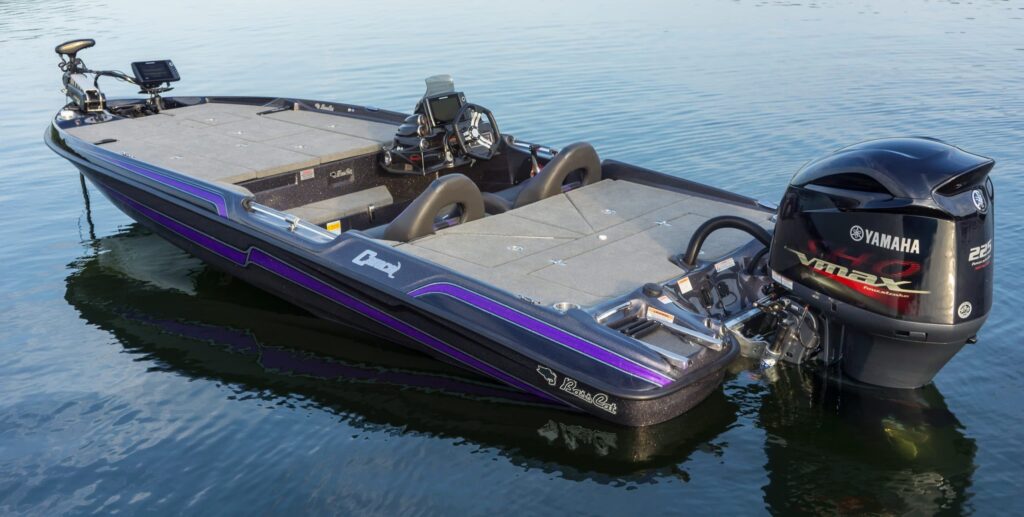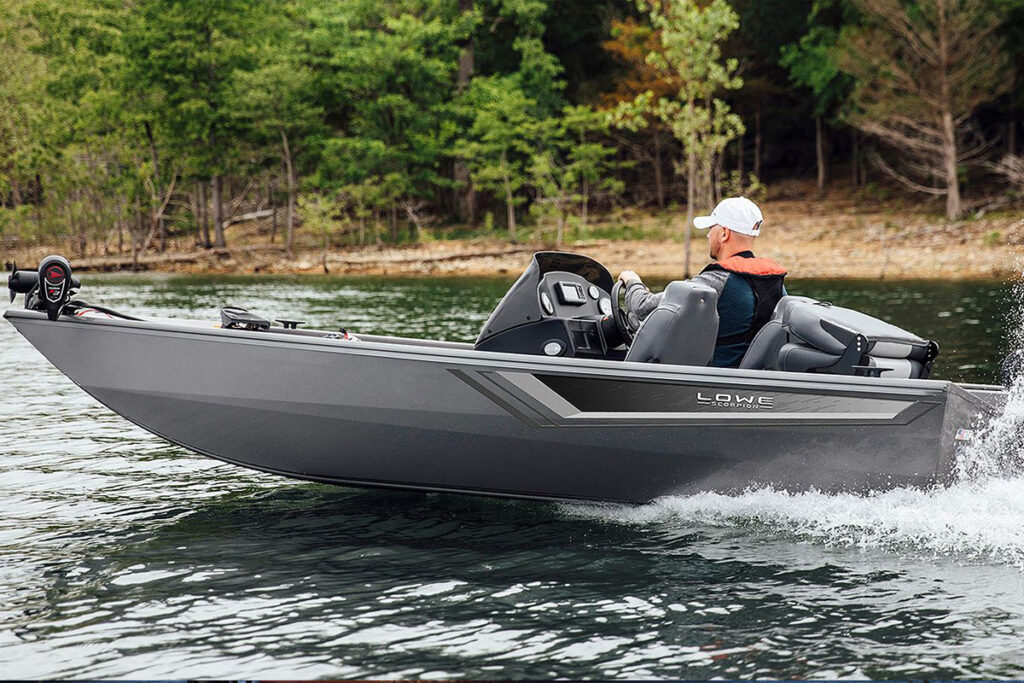When it comes to fishing, having the right boat can make all the difference. A bass boat is a popular choice among anglers, but it’s important to understand its weight capacity. In this guide, we’ll cover everything you need to know about bass boat weight capacity, including why it matters, how to determine it, and how to stay safe while on the water.
Bass boats are designed to be fast, agile, and efficient for anglers who want to target bass in freshwater. These boats are typically small, lightweight, and feature powerful engines that allow them to quickly move from one spot to another. However, with a smaller size comes a lower weight capacity, which can impact the number of people and gear that can be safely carried on board.

In this article, we’ll explore what bass boat weight capacity is, why it’s important, how to determine it, and what factors can affect it. We’ll also provide some tips for staying safe while on the water, so you can enjoy your fishing trip without any mishaps.
Understanding Bass Boat Weight Capacity
The weight capacity of a bass boat refers to the maximum amount of weight that the boat can safely carry, including people, gear, fuel, and any other items on board. Exceeding this weight limit can result in a variety of issues, such as poor handling, instability, and even capsizing.
It’s important to note that the weight capacity of a boat can vary based on its size, shape, and construction. A larger boat will generally have a higher weight capacity than a smaller boat, and a boat made of heavier materials may be able to carry more weight than a lighter one.
Importance of Bass Boat Weight Capacity
Understanding the weight capacity of your bass boat is crucial for several reasons. First, exceeding the weight limit can lead to safety hazards, such as capsizing or sinking. Second, it can affect the boat’s performance, including its speed, maneuverability, and fuel efficiency. Finally, exceeding the weight capacity can result in legal penalties, such as fines or citations.

How to Determine Bass Boat Weight Capacity
Determining the weight capacity of your bass boat is relatively easy. The capacity is usually listed on a manufacturer’s plate, which is located on the boat. If you’re unsure where to find it, consult your owner’s manual or contact the manufacturer directly.
The weight capacity is typically listed in pounds and includes the weight of the boat, engine, fuel, and any other items on board. It’s important to note that the weight capacity is not a suggestion or guideline but a legal limit that must be followed.
Factors that Affect Bass Boat Weight Capacity
Several factors can impact the weight capacity of a bass boat. Here are some of the most common ones:
- Boat size and shape: Larger boats generally have a higher weight capacity than smaller ones, and boats with wider beams can carry more weight than those with narrow beams.
- Hull construction: Boats made of heavier materials, such as fiberglass, may be able to carry more weight than those made of lighter materials, such as aluminum.
- Engine size and type: A more powerful engine may allow a boat to carry more weight, but it can also consume more fuel and reduce maneuverability.
- Equipment and accessories: Adding equipment or accessories to a boat, such as fish finders, trolling motors, or coolers, can increase its weight and reduce its capacity.

Bass Boat Weight Capacity And Sizes
Bass fishing is a popular sport that requires specialized boats designed for performance, maneuverability, and stability. Bass boats are specifically built for fishing, with features such as livewells, fishing rod storage, and elevated fishing platforms. When it comes to bass boats, size matters, as it determines the number of people the boat can accommodate, the type of water it can navigate, and the performance it can achieve.
Bass boats come in various sizes, from compact models suitable for small lakes and rivers to large vessels designed for big water and tournament fishing. In this section, we’ll group bass boats by sizes and provide examples of popular models in each category.
Grouping Bass Boats by Sizes:
- Small Bass Boats: These boats are usually under 16 feet in length and ideal for fishing in small ponds and streams. They are lightweight, easy to maneuver, and can be transported on a trailer or carried on top of a car. Popular models include the Tracker Pro 160 and the Lowe L1236.
- Medium Bass Boats: These boats range from 16 to 19 feet in length and can handle slightly larger bodies of water, including small to medium-sized lakes and rivers. They have more storage space, higher weight capacity, and better stability than small bass boats. Popular models in this category include the Nitro Z18 and the Ranger Z185.
- Large Bass Boats: These boats are over 20 feet in length and designed for big water and tournament fishing. They have high-performance engines, advanced electronics, and multiple livewells to keep fish alive during long tournaments. Popular models include the Skeeter FXR20 and the Bass Cat Caracal.
By grouping bass boats by sizes, you can choose the right boat for your needs, whether you’re a casual angler or a professional tournament fisherman. Each size category offers unique features and capabilities, allowing you to enjoy your favorite sport in different types of water and conditions.
The Smallest Bass Boats
The smallest bass boats on the market are typically around 10 to 12 feet in length. These compact boats are ideal for fishing in smaller bodies of water such as ponds, lakes, and streams. Here are 5 popular models of small bass boats along with their approximate weight and weight capacity:
- Pelican Intruder 12 – Length: 11’8″ / Weight: 126 lbs (57 kg) / Weight Capacity: 450 lbs (204 kg)
- Sun Dolphin Pro 120 – Length: 11’3″ / Weight: 200 lbs (91 kg) / Weight Capacity: 500 lbs (227 kg)
- Bass Hunter EX – Length: 9’10” / Weight: 160 lbs (73 kg) / Weight Capacity: 435 lbs (197 kg)
- Sea Eagle FishSkiff 16 – Length: 16′ / Weight: 375 lbs (170 kg) / Weight Capacity: 1000 lbs (454 kg)
- Tracker Topper 1036 – Length: 9’10” / Weight: 112 lbs (51 kg) / Weight Capacity: 386 lbs (175 kg)
It’s important to note that the weight capacity of these small boats may be lower than that of larger bass boats due to their smaller size and weight. It’s also worth mentioning that some of these models may not be specifically marketed as “bass boats”, but are suitable for bass fishing nonetheless.
A 16 ft Bass boat
The average weight of a 16 ft bass boat is around 900 to 1100 pounds (408 to 499 kg), depending on the construction materials and features. The weight capacity of a 16 ft bass boat varies based on its design and construction, but it typically ranges between 800 to 1100 pounds (363 to 499 kg), including passengers, equipment, and fuel.
Here are 5 popular models of 16 ft bass boats along with their approximate weight and weight capacity:
- Tracker Pro 160 – Weight: 719 lbs (326 kg) / Weight Capacity: 855 lbs (387 kg)
- Lowe L160 – Weight: 830 lbs (376 kg) / Weight Capacity: 990 lbs (449 kg)
- Lund Rebel XS 16 – Weight: 925 lbs (419 kg) / Weight Capacity: 1148 lbs (520 kg)
- Alumacraft Competitor 165 – Weight: 1065 lbs (483 kg) / Weight Capacity: 1250 lbs (567 kg)
- Crestliner 1650 Discovery – Weight: 1017 lbs (461 kg) / Weight Capacity: 1180 lbs (535 kg)
It’s worth noting that the weight and weight capacity of a 16 ft bass boat can vary based on the specific features, accessories, and options chosen by the buyer.
An 18 ft Bass boat
The average weight of an 18 ft bass boat is around 1500 to 1800 pounds (680 to 816 kg), depending on the construction materials and features. The weight capacity of an 18 ft bass boat varies based on its design and construction, but it typically ranges between 1200 to 1600 pounds (544 to 726 kg), including passengers, equipment, and fuel.
Here are 5 popular models of 18 ft bass boats along with their approximate weight and weight capacity:
- Nitro Z18 – Weight: 1700 lbs (771 kg) / Weight Capacity: 1350 lbs (612 kg)
- Ranger Z185 – Weight: 1565 lbs (710 kg) / Weight Capacity: 1300 lbs (590 kg)
- Skeeter ZX150 – Weight: 1340 lbs (608 kg) / Weight Capacity: 1200 lbs (544 kg)
- Bass Tracker Classic XL – Weight: 1075 lbs (487 kg) / Weight Capacity: 1350 lbs (612 kg)
- Stratos 186 VLO – Weight: 1400 lbs (635 kg) / Weight Capacity: 1500 lbs (680 kg)
Again, it’s important to note that the weight and weight capacity of an 18 ft bass boat can vary based on the specific features, accessories, and options chosen by the buyer.
A 20 ft Bass boat
The average weight of a 20 ft bass boat is around 2000 to 2500 pounds (907 to 1134 kg), depending on the construction materials and features. The weight capacity of a 20 ft bass boat varies based on its design and construction, but it typically ranges between 1500 to 2000 pounds (680 to 907 kg), including passengers, equipment, and fuel.
Here are 5 popular models of 20 ft bass boats along with their approximate weight and weight capacity:
- Skeeter FXR20 – Weight: 2250 lbs (1021 kg) / Weight Capacity: 1530 lbs (693 kg)
- Ranger Z520L – Weight: 2200 lbs (998 kg) / Weight Capacity: 1850 lbs (839 kg)
- Triton 20 TRX – Weight: 1860 lbs (843 kg) / Weight Capacity: 1850 lbs (839 kg)
- Nitro Z20 – Weight: 1975 lbs (895 kg) / Weight Capacity: 2000 lbs (907 kg)
- Bass Cat Caracal – Weight: 2000 lbs (907 kg) / Weight Capacity: 1400 lbs (635 kg)
It’s worth noting that the weight and weight capacity of a 20 ft bass boat can vary based on the specific features, accessories, and options chosen by the buyer.
Safety Tips for Operating a Bass Boat
Operating a bass boat safely is critical to avoid accidents and injuries on the water. Here are some tips to keep in mind:
- Always follow the weight capacity of your boat and avoid overloading it with gear or passengers.
- Make sure everyone on board wears a properly fitting life jacket.
- Check the weather forecast before heading out and avoid boating in rough or stormy conditions.
- Keep a safe distance from other boats, obstacles, and shorelines to avoid collisions.
- Avoid excessive speed and always be aware of your surroundings.
- If you’re new to boating, consider taking a boating safety course or seeking guidance from an experienced boater.
By following these safety tips, you can enjoy your time on the water while minimizing the risks associated with boating.
Conclusion
Bass boat weight capacity is an essential factor to consider when planning a fishing trip. Understanding your boat’s weight capacity, how to determine it, and what factors can affect it is crucial for safe and enjoyable boating. By following the tips outlined in this guide, you can stay safe while on the water and make the most of your time fishing for bass.
- Types of Gas Carriers as per IGC Code – April 22, 2025
- Wind-Assisted Propulsion Systems (WAPS): A Game Changer for Maritime Decarbonization – February 6, 2025
- 10 Boat Salvage Yards in California – January 25, 2025




